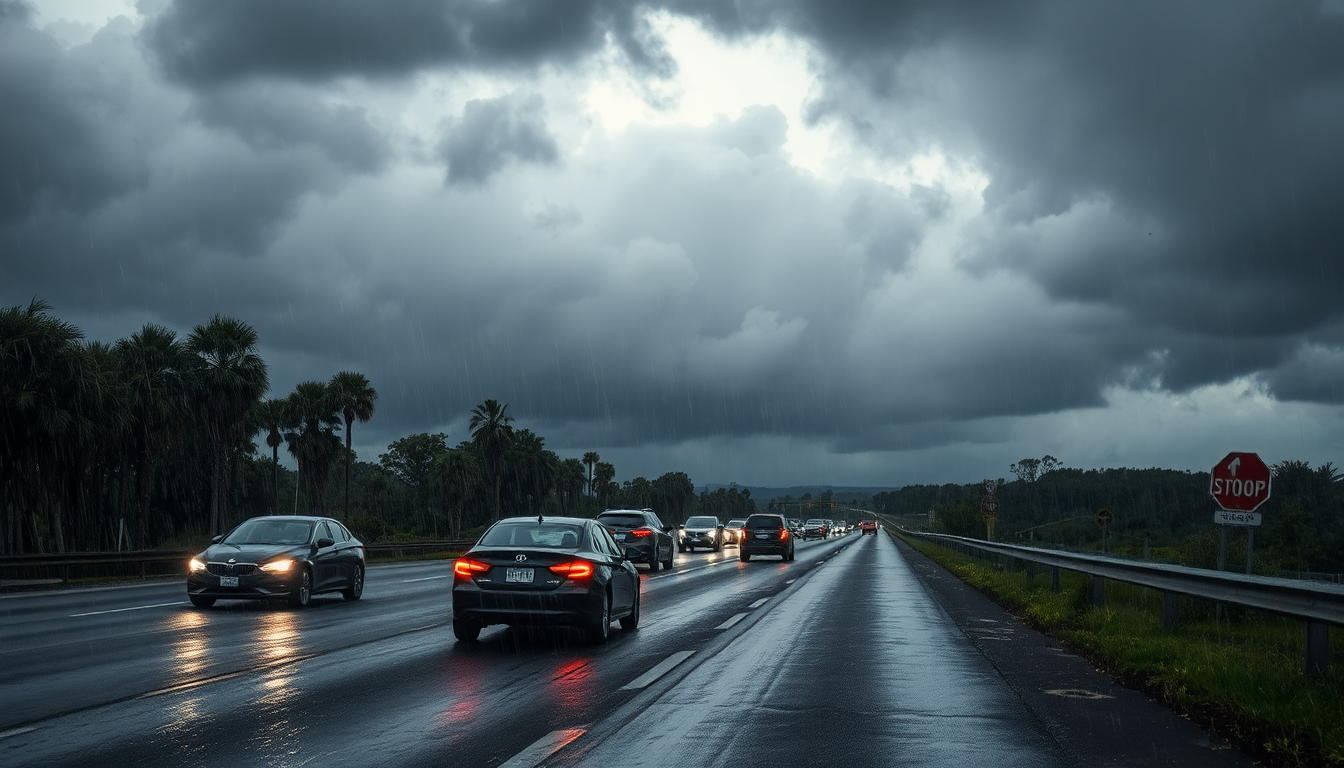Table of Contents
As millions of travelers make their way home after the Labor Day holiday weekend, they need to brace themselves for possible delays, thanks to some not-so-great weather. A series of relentless rainstorms and thunderstorms are on the horizon, ramping up the risk of flooding across various regions, particularly in the Plains and Florida.
This shift signifies a major transition from the last official days of summer into the early whispers of fall, bringing a mix of weather-related challenges and opportunities. Are you ready for what’s coming?
Current Weather Patterns and Flood Risks
Labor Day often marks the unofficial end of summer, and many areas are already showing signs of the upcoming season. Frost advisories are in place for parts of the Upper Midwest, while some trees in Alaska are starting to flaunt their autumn colors.
But it’s not just about the changing seasons; much of the United States is bracing for below-average temperatures. And with that comes a persistent flash flood threat looming over several areas. Are you keeping an eye on the skies?
The ongoing moisture levels are set to stay elevated as a cold front sweeps across the country, following a stormy weekend.
While the strength of the storms will vary, the FOX Forecast Center warns that localized downpours could lead to significant rainfall in a short time, potentially triggering floods in areas that are already vulnerable. Although some regions might see just a sprinkle, parts of the Plains could be looking at 1-2 inches of rain, further heightening the flood risk.
In addition to the cold front, a weaker low-pressure system is moving out of the Plains. Major urban centers like Kansas City and Nashville might also see heavier rainfall, although conditions are expected to dry out by mid to late week.
The NOAA’s Weather Prediction Center has pinpointed specific areas in the central and northern Plains, as well as parts of the Tennessee Valley, under a Level 1 out of 4 flash flood threat, signaling a need for heightened awareness. Are you prepared for a rain-soaked return home?
Regional Insights: Notable Flood Alerts
Southern New Mexico and Arizona, along with regions in western and southern Texas, are also under that Level 1 flash flood threat. Flood watches have been issued for major Texas cities like Austin, San Antonio, and Kerrville, the latter of which recently faced a catastrophic flooding event. Meanwhile, Florida is still wrestling with a multi-day flash flood and thunderstorm threat, and conditions aren’t expected to improve anytime soon. How do you plan to navigate these weather challenges?
The stalled cold front is slowly shifting further south and east across Florida, where both coasts are experiencing drought conditions. So, the anticipated rain is not just a nuisance; it’s actually desperately needed. Through Monday, a low-pressure area is expected to slide along the nearly stationary cold front, potentially bringing moisture and rainfall to the Southeast. However, despite a notable dip in the jet stream, tropical development doesn’t seem likely. Are you wondering how this will affect your plans?
Even with the initial cold front weakening, a secondary front is on the way, likely sticking around until Thursday or Friday. The Weather Prediction Center has placed most of the Florida Peninsula under a Level 1 out of 4 flash flood risk for the week, underscoring the need for vigilance among residents and travelers alike. Are you ready to stay informed?
Looking Ahead: Weather Patterns and Implications
As we shift from summer to fall, expect weather patterns to fluctuate, with varying degrees of rainfall and temperature changes across the United States. The interplay between cold fronts and moisture levels will continue to create opportunities for storms, especially in regions already prone to flooding. What does this mean for your travel plans?
If you’re hitting the road after the holiday, it’s crucial to stay updated on weather forecasts and potential delays. Keep an eye on local updates and heed any flood warnings, especially in areas currently under threat. As the seasons change, weather will play a key role not just in your travel plans, but also in the broader environmental conditions across the country. Are you prepared for whatever nature throws your way?





